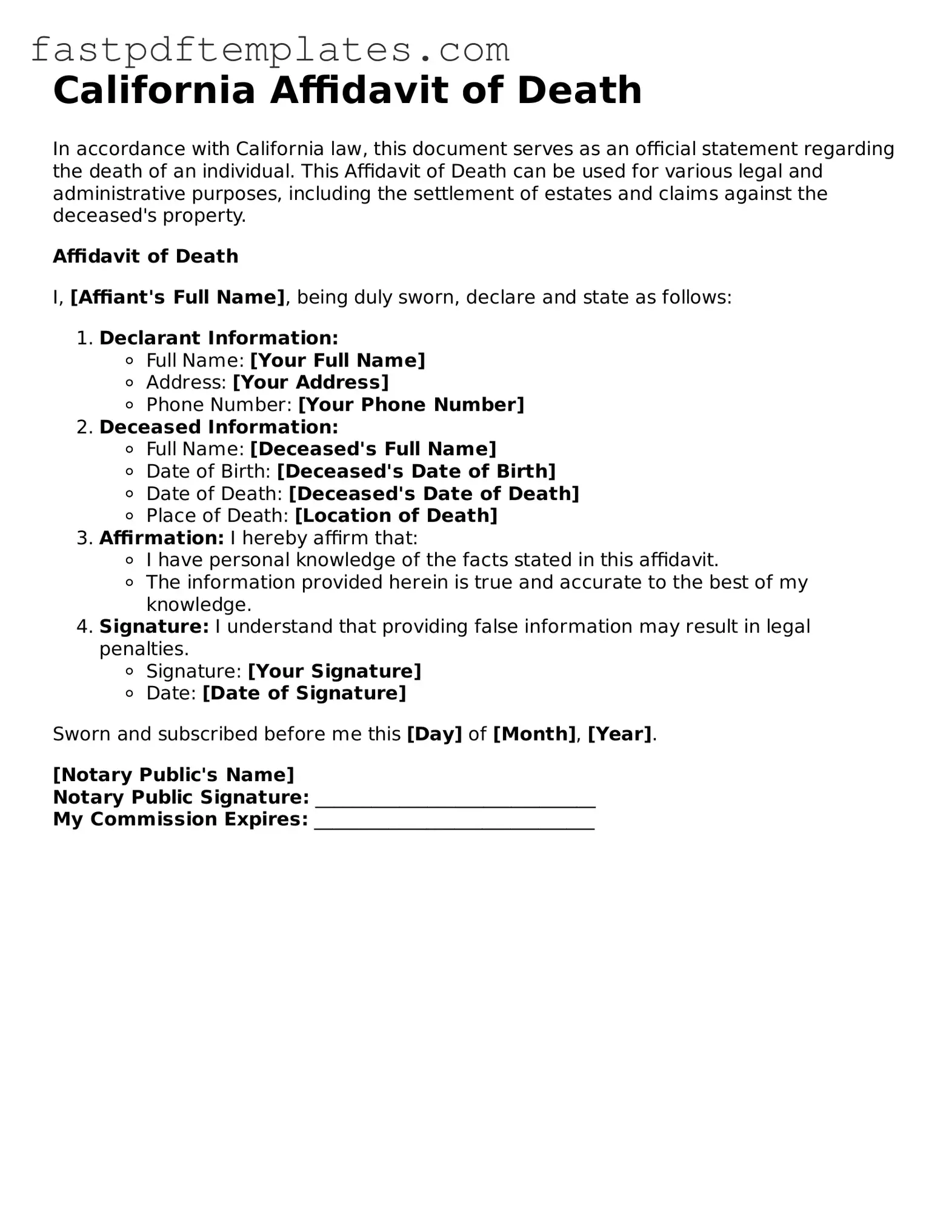California Affidavit of Death
In accordance with California law, this document serves as an official statement regarding the death of an individual. This Affidavit of Death can be used for various legal and administrative purposes, including the settlement of estates and claims against the deceased's property.
Affidavit of Death
I, [Affiant's Full Name], being duly sworn, declare and state as follows:
- Declarant Information:
- Full Name: [Your Full Name]
- Address: [Your Address]
- Phone Number: [Your Phone Number]
- Deceased Information:
- Full Name: [Deceased's Full Name]
- Date of Birth: [Deceased's Date of Birth]
- Date of Death: [Deceased's Date of Death]
- Place of Death: [Location of Death]
- Affirmation: I hereby affirm that:
- I have personal knowledge of the facts stated in this affidavit.
- The information provided herein is true and accurate to the best of my knowledge.
- Signature: I understand that providing false information may result in legal penalties.
- Signature: [Your Signature]
- Date: [Date of Signature]
Sworn and subscribed before me this [Day] of [Month], [Year].
[Notary Public's Name]
Notary Public Signature: ______________________________
My Commission Expires: ______________________________
